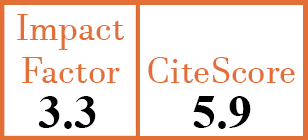Full Papers
Proposal for a disease severity score for axial spondyloarthritis: results from an Italian longitudinal study
M. Tasso1, A. Bernasconi2, D. Turco3, M. Cascone4, R. Peluso5, A. Oriente6, M. Mariconda7, R. Scarpa8, A. Del Puente9, L. Costa10, F. Caso11
- Department of Clinical Medicine and Surgery, University of Naples Federico II, Naples, Italy. marco.tasso@unina.it
- Department of Public Health, University of Naples Federico II, Naples, Italy.
- Department of Clinical Medicine and Surgery, University of Naples Federico II, Naples, Italy.
- Department of Clinical Medicine and Surgery, University of Naples Federico II, Naples, Italy.
- Department of Clinical Medicine and Surgery, University of Naples Federico II, Naples, Italy.
- Department of Clinical Medicine and Surgery, University of Naples Federico II, Naples, Italy.
- Department of Public Health, University of Naples Federico II, Naples, Italy.
- Department of Clinical Medicine and Surgery, University of Naples Federico II, Naples, Italy.
- Department of Clinical Medicine and Surgery, University of Naples Federico II, Naples, Italy.
- Department of Clinical Medicine and Surgery, University of Naples Federico II, Naples, Italy.
- Department of Clinical Medicine and Surgery, University of Naples Federico II, Naples, Italy.
CER18583
2025 Vol.43, N°11
PI 1950, PF 1957
Full Papers
PMID: 40737054 [PubMed]
Received: 31/01/2025
Accepted : 06/06/2025
In Press: 30/07/2025
Published: 11/11/2025
Abstract
OBJECTIVES:
Effective assessment of disease severity in axial spondyloarthritis (axSpA) is essential for clinical decision-making, particularly in patients naive to biologic therapy. We developed the Spondyloarthritis Severity Index (SpA-SI), a composite tool designed to capture key clinical and inflammatory domains of axSpA, and evaluated its performance in a prospective cohort.
METHODS:
One hundred bDMARD-naive patients with axSpA were enrolled. The SpA-SI integrates six parameters: FABER test, morning stiffness, VAS for back pain, extraarticular manifestations, peripheral synovial and entheseal involvement, and CRP levels. The total score ranges from 0 to ≥7 points.
RESULTS:
At baseline, the median SpA-SI score was 7.2 (IQR 6.2–7.6; range 3.4–12.2), which significantly improved to 4.9 at 6 months (IQR 2.8–7.0; range 1.2–9.5; p<0.001). SpA-SI showed a strong correlation with ASDAS both as a continuous measure and in categorised disease activity groups (p<0.001). Moderate-to-strong correlations with BASDAI were observed at baseline (r=0.47, p<0.001) and at six months (r=0.79, p<0.001), with similar significance when analysed by group.
CONCLUSIONS:
The SpA-SI represents an exploratory, multidimensional index that captures key clinical and inflammatory domains. By incorporating extra-articular manifestations and physical examination findings, it reflects the complexity of axSpA in routine care. Despite its limitations, including single-centre design and absence of formal validation, the SpA-SI demonstrated strong correlations with established indices and sensitivity to change. These findings support further validation in larger, multicentre cohorts to assess its potential role in complementing existing disease activity measures.


